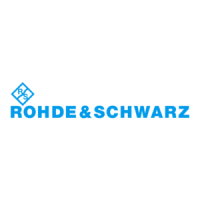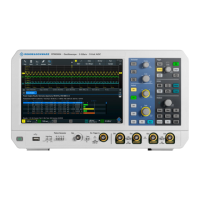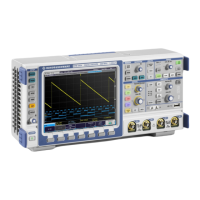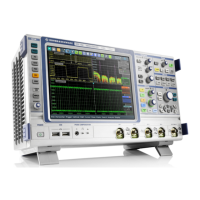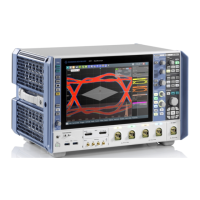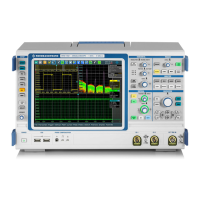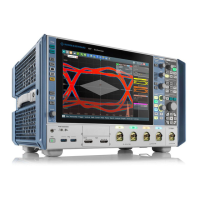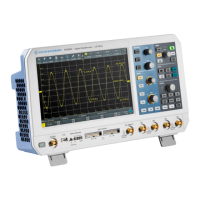Serial bus analysis
R&S
®
RTM3000
285User Manual 1335.9090.02 ─ 09
● The CAN protocol..................................................................................................285
● CAN configuration.................................................................................................286
● CAN trigger........................................................................................................... 288
● CAN decode results.............................................................................................. 292
● Search on decoded CAN data.............................................................................. 294
● CAN label list.........................................................................................................296
13.5.1 The CAN protocol
This chapter provides an overview of the protocol characteristics, frame types, informa-
tion transfer and message formats.
The CAN 2.0 specification defines two formats: the base CAN (version 2.0A) with an
11-bit identifier and the extended CAN (version 2.0B ) with a 29-bit identifier. Based on
theses specifications the CAN standard ISO 11898-1 was released, in 1993.
CAN characteristics
Main characteristics of CAN are:
●
Differential signaling.
●
Transmission over two wires, high and low.
●
Multi-master, which means that any node can begin to transmit a message, when a
bus is free.
●
Bitwise arbitration.
Arbitration
Information transfer is done by carrier sense multiple access/bitwise arbitration (CSMA/
BA). Each node waits for a certain inactive period before it tries to send a message.
Collisions are resolved through a bitwise arbitration that is non-destructive.
Each message has a priority which is implied in the identifer value - the lower the
value, the higher the priority. A dominant bit from the message with highest priority
overwrites the recessive bits on the bus. If a node detects that the bus is already
receiving a message that has a higher priority, it stops the transmission and waits for
the current transmission to end before retransmitting.
Frame types
The CAN protocol defines the following types of frames:
●
Data: used for information transmission.
●
Remote: used for information request. The destination node sends this frame to the
source to request data. This type of frame is only used by CAN.
●
Error: indicates that a bus node has detected transmission error.
●
Overload: used from a bus node to request a transmission delay.
CAN (option R&S
RTM-K3)
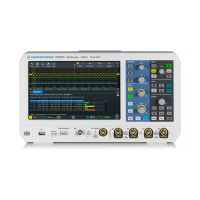
